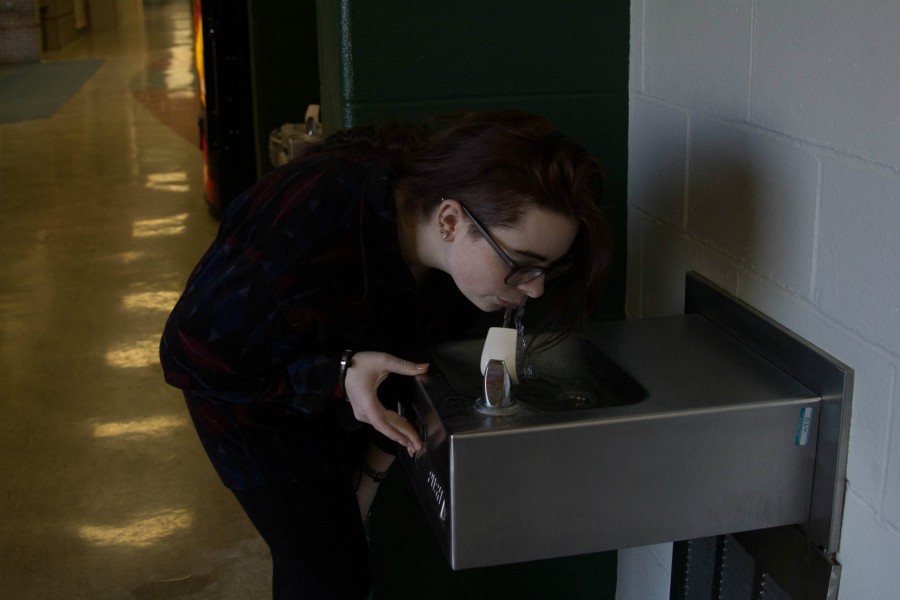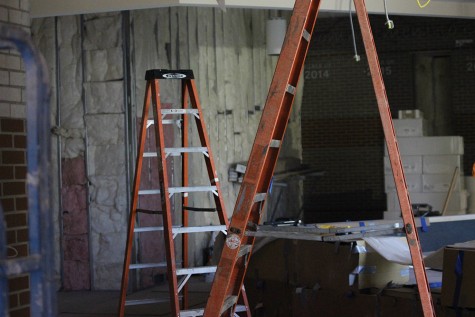Clear reason exists for cloudy fountain water
Usually turning to her water bottle, senior, Brianna Adams, takes a reluctant sip out of the school drinking fountain. Students have been questioning the school’s water quality. “It’s not convent. One time it was cloudy and foggy,” Adams said.
Junior Hayley Boden listens to her chemistry teacher mention suspicious water coming from the drinking fountain, and, a short time later, she notices it herself. The water trickling out of the fountain and into her water bottle is cloudy.
“I heard [the cloudiness] was from the construction,” Boden said.
The opacity of the school’s water, however, is probably harmless.
“I wondered if [there] was something dissolved in it, but I don’t think there is,” chemistry teacher Jordan Rose said. “Tap water has tons of stuff dissolved in it … you’d have to do a water quality test. What I saw the other day was bubbling.”
According to the United States Geological Survey website, when water is cold, the air around it has increased solubility in the liquid. It follows that during the winter months, more air dissolves in water. When this air-infused water leaves a tap, it is depressurized, and the air leaves the water as bubbles, similar to the process of carbonation. The water is completely harmless, and, if left in an open container, the bubbles will clear, similar to how carbonated soda will go flat.
While dirty water is one of the world’s largest health risks, this type of contamination is usually caused by things like pollution runoff and dangerous algae blooms, not air.
“If it’s just air, it’s not a big deal; I don’t care,” Boden said.
Your donation will support the student journalists of Lawrence Free State High School. Your contribution will allow us to purchase equipment and cover our annual website hosting costs.











